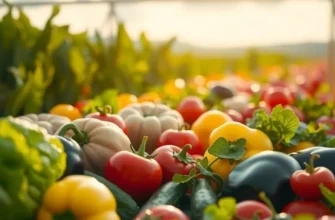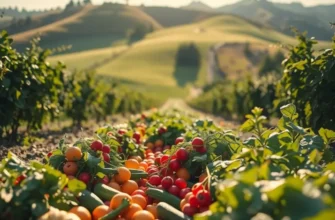Understanding cooking times is crucial for every home cook, whether you’re a novice or a seasoned chef. This cheat sheet will provide you with clear and practical guidelines to ensure your meals turn out perfectly every time. From meats to vegetables, mastering these times can elevate your cooking skills and confidence in the kitchen.
Essential Cooking Times for Meats

Mastering the art of cooking meat hinges on understanding the proper cooking times according to the cut and method. Let’s dive into the specifics for chicken, beef, pork, and fish.
Chicken:
- Whole Chicken: Roast in the oven at 375°F (190°C) for 20 minutes per pound, plus an additional 15 minutes. Ensure the internal temperature reaches 165°F (74°C).
- Chicken Breasts: Grilled on medium heat for 6-8 minutes per side. Adjust based on thickness to maintain juiciness while avoiding undercooking.
- Chicken Thighs: For slow cooking, allow 6 hours on low in a slow cooker, achieving a tender and flavorful result.
Beef:
- Ribeye Steak: Grill at high heat for 4-5 minutes per side for medium-rare. Rest for 5 minutes after cooking to allow juices to redistribute.
- Roast Beef: Preheat oven to 350°F (175°C), and cook for 20 minutes per pound for medium-rare. Ensure an internal temperature of at least 145°F (63°C).
- Ground Beef: Brown on a stovetop skillet for approximately 7-10 minutes, ensuring no pink remains.
Pork:
- Pork Chops: Grill or pan-fry pork chops on medium-high heat for 4-5 minutes each side until they reach an internal temperature of 145°F (63°C).
- Pork Tenderloin: Roast at 400°F (200°C) for 20-25 minutes. Monitor with a meat thermometer to ensure optimum doneness.
- Pulled Pork: Cook in a slow cooker on low for 8-10 hours, allowing the meat to become fork-tender and easily shredded.
Fish:
- Salmon Fillet: Bake at 400°F (200°C) for 12-15 minutes. The flesh should be opaque and flake easily with a fork.
- Cod Fillet: For pan-searing, cook for 4-5 minutes per side, depending on thickness. A moist texture is key.
- Shrimp: These cook rapidly; grill or sauté for 2-3 minutes per side until pink and opaque.
Proper storage and handling are crucial before cooking to maximize both safety and flavor. For more on safe storage techniques that reduce waste, consider exploring the principles of eco-smart kitchen storage.
Understanding these times allows you to expertly balance safety and taste. Each method impacts the texture and flavor of the meat, transforming your dish from basic to extraordinary.
Cooking Times for Vegetables and Grains

When cooking vegetables and grains, achieving the right texture and flavor is crucial. Knowing how long to steam, boil, roast, or sauté various ingredients ensures they retain their nutrients and vibrant colors.
Steaming Vegetables:
Steaming is an excellent method for preserving nutrients and flavor. Broccoli typically takes about 5-7 minutes, while carrots need 8-10 minutes. Asparagus usually requires 4-6 minutes, depending on spear thickness. To check if vegetables are done, pierce them with a fork; they should be tender yet firm.
Boiling Vegetables and Grains:
For boiling vegetables like potatoes, you’ll need about 15-20 minutes depending on size. Plan for 8-10 minutes for green beans. When boiling grains, use plenty of water and a touch of salt. White rice generally takes 18 minutes, while brown rice can take up to 45 minutes. Quinoa cooks quickly, usually within 15 minutes. The key indicator for doneness in grains is absorption of water and tenderness achieved by simply tasting them.
Roasting Vegetables:
Roasting enhances the flavor through caramelization. For root vegetables such as sweet potatoes or carrots, 25-30 minutes at 400°F is ideal. Vegetables like zucchini and bell peppers only need around 20 minutes. A light coating of olive oil helps with even browning and prevents sticking. Vegetables are perfectly roasted when they are golden brown and slightly crisp on the outside.
Sautéing Vegetables:
Sautéing is quick and effective for many vegetables. Begin with a hot pan and a little oil. Mushrooms, for instance, take about 5-7 minutes. Spinach wilts in just 2-3 minutes. Onions typically become translucent after 5 minutes. To prevent overcrowding, cook in batches for the best results, ensuring even cooking.
Pasta Cooking Times:
Pasta plays a vital role in many meals. Fresh pasta can be done in 2-4 minutes, while dried pasta often needs 8-12 minutes, depending on thickness. Always taste a piece to check for the desired al dente texture, firm yet cooked through.
For those interested in minimizing waste and promoting sustainability in the kitchen, exploring low-waste cooking prep is a practical approach to incorporate in your meal planning.
Mastering the cooking times for vegetables and grains can enhance both nutritional value and taste, allowing each ingredient to shine. With the guidance provided, you’ll be able to cook confidently and enjoy your kitchen creations.
Final words
Perfecting your cooking times is a powerful tool in enhancing your culinary skills. Armed with this cheat sheet, you can confidently approach your kitchen endeavors, knowing exactly how long to cook each ingredient for maximum flavor and safety. Whether you’re preparing a hearty roast or a delicate vegetable side, proper timing will ensure delicious results every time. Embrace these guidelines and enjoy the journey of becoming a more proficient home cook.







